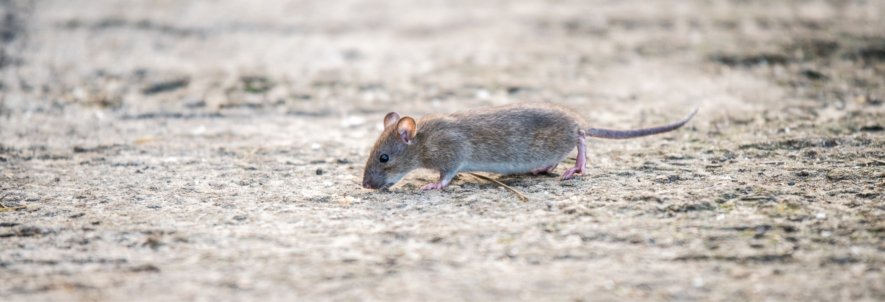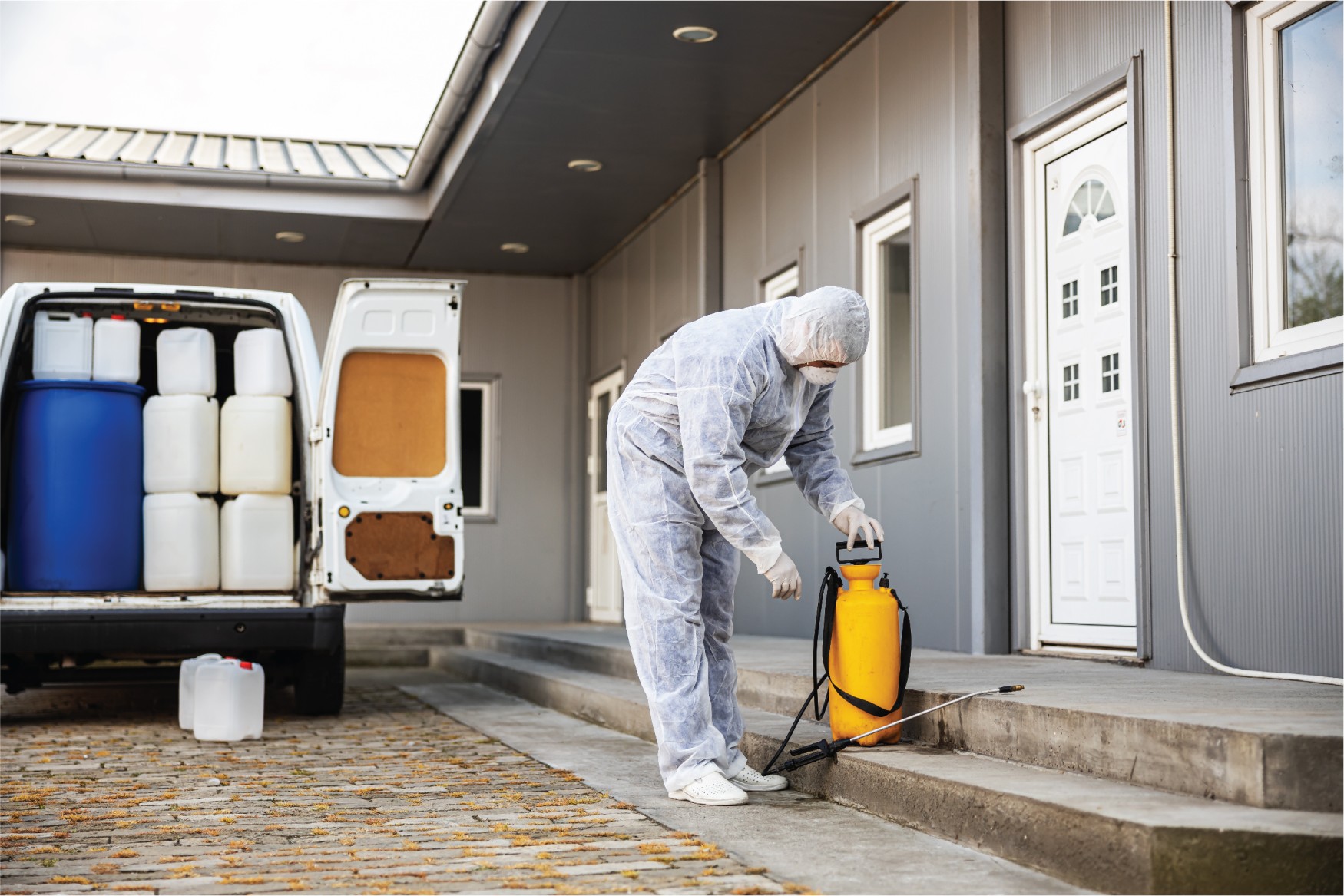
Pesticides are used in a variety of industries and markets to control pests. But these substances are highly toxic and potentially very dangerous — and not just to other animals, but to humans as well. It's important that the individuals who administer these substances are properly protected, which is why PPE for pest control is so beneficial. In this post, we're going to focus on a particular pesticide: rodenticide, or the substances used to eliminate the likes of rats and mice. Here's a closer look at what rodenticides are, what industries commonly use them, their potential health effects, and suggested PPE when administering them:
What is a Rodenticide?
Most commonly known as "rat poison" as the name implies, a rodenticide is a type of pesticide that's specific to controlling rodents. However, rodenticides extend beyond just rats and mice and are also used as pest control for squirrels, moles, voles, and gophers. They're intended to control rodents on properties where trapping is either not effective or not feasible. An example would be on a farm where rodents are damaging crops, consuming animal feed, or causing damage to the soil or grounds.
Rodenticides are usually administered in the form of baits, sprays, pellets, blocks, or powders, which attract the rodents that they're designed to eliminate. However, there's more than one type of rodenticide, and the various types of this pesticide are designed to eliminate rodents in different ways. For instance, anticoagulants prevent blood from clotting. Other types shut down the nervous system in subjects that consume it.
However, one hazard that is associated with rodenticides is that they're often consumed by more than just the rodents they're intended to attract and eliminate. Other animals, such as pet dogs or cats, may become exposed to sprays and powders. If not properly protected or administered, humans are also at risk of exposure to these sprays and powders which spread more easily. Birds, other mammals, and humans can be impacted if they consume or are exposed to rodenticides. Later in this piece, we'll examine protective clothing for pesticide application and more safety measures that you should be taking when applying rodenticides to ensure your safety.
The Four Categories of Pesticides
While there are a wide variety of pesticides, rodenticides happen to be among the top four that are commonly used. Including rodenticides, the three main other types of pesticides include:
- Insecticides, which are used to control insects. Insecticides are primarily used in agriculture and in medicines.
- Herbicides, which are used to control plants. Herbicides are commonly known as weedkillers or fertilizers.
- Fungicides are used to control fungi and their spores.
Industries that Use Rodenticide
According to Grand View Research, the global rodenticide market is valued at about $750 million, and is likely to increase with a greater emergence of rodent-related diseases, higher rodent populations, and an increasing need for adequate pest control solutions. Some of these potentially deadly rodent-related diseases include hantavirus, Lassa fever, and the plague. It's worth noting that pesticide PPE suppliers must have their products registered under the U.S. Environmental Protection Agency (EPA) before they're able to be sold to the public. EPA-approved rodenticides are commonly used in the following industries and applications:
- Pest control (exterminators)
- Farming and agriculture
- Multi-family properties (i.e., apartment buildings)
- Industrial warehouses
- Urban centers
- Single-family households
Common Types of Rodenticides
Rodenticides are typically broken down into two types: anticoagulant rodenticides and non-anticoagulant rodenticides. Here's a brief description of how each type of rodenticide is designed to work on its intended subjects:
- Anticoagulant: These potent rodenticides are designed to eliminate subjects in a single feeding. They work by preventing a rodent's body from clotting blood properly, which leads to excessive internal bleeding. After consuming the anticoagulant, the rodent typically perishes within a day or two from this bleeding. There are two generations of anticoagulant rodenticides, the first generation is EPA-registered and often requires several feedings to eliminate the subjects. Second-generation anticoagulant rodenticides, or SGARs, are much more potent than the first generation and are often more harmful to other animals or humans that may encounter them.
- Non-anticoagulant: These types of rodenticides are designed to wreak havoc on the subject's nervous system, eliminating them in anywhere from a few hours to a few days following a lethal dose.
Health Effects of Rodenticide
A rodenticide can be harmful to any mammal that consumes it or comes into indirect contact with it. For humans, there's a real threat if the rodenticide being applied is either in powder or liquid form. Regardless of the type of exposure, rodenticides can cause irritation to the skin and to the eyes. If they're ingested or inhaled, the consequences can be worse — perhaps even deadly.
The health effects from rodenticide exposure can be acute or immediate, moderate, and severe. Here's a look at the potential harm that rodenticide exposure can cause:
- Immediate health effects can range from burning or watering eyes, skin irritation, and a sore throat. Rashes and blisters are also common. Exposure may also result in nausea and feeling dizzy.
- Exposure to rodenticides may have some longer-term health effects, such as reproductive issues and a greater risk of developing certain types of cancers. Moderate health effects include excessive saliva production, blurred vision, and breathing issues.
- Exposure to rodenticides also has the potential to be severe. While rodenticides are used to eliminate rodents, the poison has the potential to have the same effect on all mammals. Severe health effects associated with rodenticide exposure may include paralysis, internal bleeding, liver failure, and death.
Keep in mind that consuming rodenticides is not the only way you may experience some of these health issues. Touching or inhaling such products can also present health hazards.
PPE for Pest Control and Rodenticides
When working with rodenticides that can have potentially debilitating health consequences, it's important to protect the hands, eyes, lungs, and skin. OSHA pesticide PPE includes the following:
- Gloves: Chemical-resistant gloves are crucial to protecting the hands during application and eliminating any potential exposure.
- Eye protection: Goggles or safety glasses should also be worn to eliminate any contact with the applicator's eyes. In some cases, face shields or goggles with side shields should be worn.
- Lung protection: Because rodenticides can irritate the lungs if inhaled, respirators or face masks should be worn to prevent inhalation. If you wear a respirator while working with rodenticides, ensure you are conducting a proper fit test so you're receiving adequate protection from this piece of safety equipment.
- Protective clothing: Minimally, you should be wearing long sleeves and long pants to prevent skin exposure. In some cases, full-body protective suits prove beneficial and prevent exposure. Aprons and protective sleeves may also be appropriate.

How to Mitigate Risk
Perhaps the most significant way to minimize risk and exposure is to ensure that you're protected when working with or around rodenticides. Consistently wearing appropriately fitting PPE helps minimize the risk of exposure and helps decrease long-term health effects. That said, there are other means of mitigating risk as well. Some tips include:
- Reading rodenticide labels: Always make sure that you read and understand the rodenticides that you're working with. Not only can you glean important safety information by reading the labels, but you can also help determine what PPE you need to wear to stay protected. For pesticides to become EPA-registered, the label must include information on PPE.
- Clean and maintain PPE: Make sure that you're keeping any potentially contaminated PPE away from clean PPE so that it can be cleaned and laundered without the potential of cross-contaminating other types of safety equipment. Discard PPE that cannot or should not be reused. If PPE can be reused, make sure you are cleaning it properly and drying it before using it again. Replace filters in respirators according to manufacturer recommendations.
- Post safety signage: By posting safety signage after fresh applications of rodenticide have been administered, you're helping humans stay away from these areas to avoid the risk of potential exposure.
- Wash your hands: It's simple, but something like washing your hands can help prevent exposure to rodenticides. One of the primary ways that rodenticides can enter the body is through eye contact, and this can occur if you rub your face. Keeping your hands clean can help prevent exposure via touching the eyes, nose, or mouth.
As you can see, rodenticides can be very dangerous if they're not handled or administered properly. This is why knowing the proper PPE for pest control is so important. By understanding the health risks and what needs to be done to properly mitigate hazards, you can ensure that you're applying rodenticides to only eliminate the pests that it is intended to.